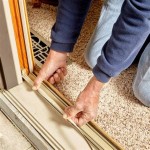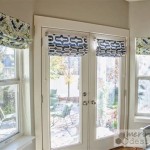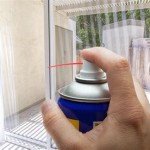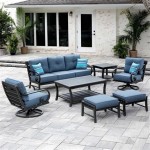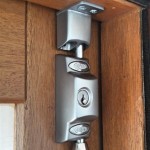Portable Outdoor Fan For Patio: Enhancing Comfort in Your Outdoor Living Space
The increasing desire to maximize outdoor living spaces has driven innovation in outdoor comfort solutions. Among these, the portable outdoor fan for the patio stands out as a versatile and effective tool for combating heat and improving air circulation. This article aims to explore the features, benefits, and considerations for selecting the appropriate portable outdoor fan for your specific patio needs, enabling a more enjoyable and comfortable outdoor experience.
The fundamental function of a portable outdoor fan is to provide a localized cooling effect. By generating airflow, these fans facilitate evaporative cooling, where moisture on the skin evaporates, drawing heat away from the body and creating a sensation of coolness. This is particularly effective in drier climates where the air's capacity to absorb moisture is higher. However, even in more humid environments, a fan can significantly improve comfort by disrupting the stagnant air layer around the body and promoting air movement. Portability adds another layer of convenience, allowing users to move the fan to different areas of the patio or even bring it indoors as needed.
The design and construction of portable outdoor fans differ significantly from their indoor counterparts. They are typically built with more durable materials capable of withstanding the elements, including UV radiation, moisture, and dust. Many models also feature weather-resistant coatings and sealed motors to protect against damage from rain and humidity. These considerations are vital to ensure the longevity and reliable performance of the fan when exposed to outdoor conditions. Furthermore, safety features, such as grounded cords and tip-over protection, are often incorporated to enhance user safety in outdoor settings.
Key Point 1: Types of Portable Outdoor Fans
Portable outdoor fans are available in a variety of types, each with its own set of advantages and disadvantages. Understanding these differences is crucial for making an informed purchasing decision. The most common types include pedestal fans, misting fans, and box fans, each designed to cater to specific needs and preferences.
Pedestal Fans: These are perhaps the most recognizable type of portable fan. They consist of a fan head mounted on a pole, typically adjustable in height. Pedestal fans offer a good balance between airflow and portability, making them suitable for a range of patio sizes. Many models include adjustable speed settings and oscillation features, allowing users to customize the airflow direction and intensity. The height adjustability is particularly useful for directing airflow at different levels, maximizing comfort for individuals seated or standing. However, pedestal fans can be less stable in windy conditions and may require a solid, level surface for optimal performance.
Misting Fans: Misting fans combine the cooling power of a fan with the evaporative cooling effect of water mist. These fans typically incorporate a water reservoir and a pump that sprays a fine mist into the airflow. As the mist evaporates, it absorbs heat from the surrounding air, creating a significantly cooler environment. Misting fans are particularly effective in hot, dry climates where the evaporative cooling process is most efficient. They can provide a refreshing and comfortable atmosphere on even the hottest days. However, misting fans require a water source and may increase humidity levels, which can be a concern in already humid environments. Proper maintenance is also crucial to prevent mineral buildup and ensure the misting nozzles remain clear.
Box Fans: Box fans are characterized by their square or rectangular shape and enclosed fan blades. They are typically lightweight and easy to transport, making them a convenient option for smaller patios or for moving between different locations. While box fans may not offer the same level of airflow as pedestal fans, they are often more energy-efficient and can be a cost-effective cooling solution. Some models are designed with weather-resistant features, making them suitable for outdoor use. However, box fans can be less aesthetically pleasing than other types of portable fans and may not be as durable when exposed to harsh weather conditions.
Beyond these three primary types, other portable fan options exist, including table-top fans and floor fans. The best choice depends on a variety of factors, including the size of the patio, the desired level of cooling, and personal preferences.
Key Point 2: Factors to Consider When Selecting a Portable Outdoor Fan
Choosing the right portable outdoor fan requires careful consideration of several key factors to ensure optimal performance and satisfaction. These factors include the fan's airflow capacity, durability, power source, noise level, and overall design aesthetics.
Airflow Capacity: The airflow capacity of a fan is measured in cubic feet per minute (CFM) and indicates the volume of air the fan can move. A higher CFM rating generally translates to a stronger and more effective cooling effect. The appropriate CFM rating depends on the size of the patio and the desired level of cooling. For larger patios, a fan with a higher CFM rating is necessary to provide adequate air circulation. Consider the typical number of people on the patio and the average temperature when selecting a fan with an appropriate airflow capacity. It is often better to err on the side of a higher CFM rating to ensure sufficient cooling, especially during peak heat hours.
Durability: Outdoor conditions can be harsh on electronic devices, so durability is a critical consideration. Look for fans constructed with weather-resistant materials, such as UV-resistant plastic or powder-coated metal. Check for features like sealed motors and grounded cords, which provide added protection against moisture and electrical hazards. The fan's base should be stable and resistant to tipping, especially in windy conditions. Reading customer reviews can provide valuable insights into the fan's real-world durability and performance over time.
Power Source: Portable outdoor fans can be powered by either electricity or batteries. Electric fans offer consistent power and are ideal for areas with readily available outlets. However, they require an extension cord and may limit mobility if an outlet is not conveniently located. Battery-powered fans, on the other hand, provide greater portability and can be used in areas without access to electricity. However, their runtime is limited by the battery capacity, and they may require frequent recharging or battery replacement. Consider the availability of power outlets and the desired level of portability when choosing between electric and battery-powered fans.
Noise Level: The noise level of a fan can significantly impact the enjoyment of your outdoor space. Some fans can be quite noisy, which can be distracting and disruptive. Look for fans with a low decibel (dB) rating, especially if you plan to use the fan frequently or for extended periods. Many manufacturers provide noise level specifications for their fans, allowing you to compare models and choose a quieter option. Reading customer reviews can also provide valuable insights into the fan's real-world noise performance.
Design Aesthetics: While functionality is paramount, the design aesthetics of a fan can also be an important consideration. Choose a fan that complements the overall style of your patio and enhances its visual appeal. Portable outdoor fans are available in a variety of styles, colors, and finishes, allowing you to find one that matches your personal preferences. Consider the fan's size and shape, as well as its overall design, to ensure it blends seamlessly with your outdoor décor.
Key Point 3: Maintenance and Safety Tips for Portable Outdoor Fans
Proper maintenance and adherence to safety guidelines are essential for ensuring the longevity and safe operation of portable outdoor fans. Regular cleaning, proper storage, and following manufacturer's instructions can help prevent malfunctions and potential hazards.
Cleaning: Dust and debris can accumulate on fan blades and motors, reducing their efficiency and potentially causing overheating. Regularly clean the fan blades and housing with a soft cloth or brush. For stubborn dirt, you can use a mild soap and water solution. Ensure the fan is unplugged and completely dry before reassembling and using it. Pay particular attention to the motor vents, as these can become clogged with dust, hindering airflow and potentially damaging the motor. Vacuuming the vents can help remove dust and maintain optimal performance.
Storage: When not in use, store the fan in a dry, sheltered location to protect it from the elements. Extreme temperatures, moisture, and UV radiation can damage the fan's components and shorten its lifespan. If possible, store the fan in its original packaging or a protective cover. This will help prevent dust and debris from accumulating and protect it from physical damage. Before storing the fan for an extended period, clean it thoroughly and ensure it is completely dry.
Safety Guidelines: Always follow the manufacturer's instructions for safe operation. Use a grounded extension cord suitable for outdoor use if needed. Avoid using the fan in wet conditions or near standing water unless it is specifically designed for such use. Never insert objects into the fan blades while it is running. Keep children and pets away from the fan to prevent accidents. Inspect the power cord regularly for damage and replace it if necessary. If the fan malfunctions or exhibits unusual behavior, stop using it immediately and consult a qualified technician. Ensure the fan is placed on a stable, level surface to prevent tipping. Never attempt to repair the fan yourself unless you are qualified to do so. Disconnect the fan from its power source before performing any maintenance or repairs.
By considering the type of fan, key factors, and safety tips mentioned, individuals can select the appropriate portable outdoor fan for their patio. This would lead to a more comfortable and enjoyable outdoor living space.

This Exorbitant Cordless Geek Aire Fan Is Worth Every Penny Wirecutter

This Exorbitant Cordless Geek Aire Fan Is Worth Every Penny Wirecutter

Vevor Cordless Fan 12 In Portable Quiet Personal For Home Or Office 360 Degree Manual Pivoting Head Stepless Speed Regulation High Velocity Heavy Duty Metal Floor Fans Us

Outdoor Portable Fans At Lowes Com

Newair 18 In 120 Volt 3 Speed High Velocity Outdoor Brown Oscillating Misting Pedestal Fan Af 600 At Lowes Com

Outdoor Portable Fan With Spray Misting Summer Water Mist And Stand Price Made In Com

Summer Blast Umbrella Fan The Green Head

Home Decorators Collection Calthorpe 20 In Indoor Outdoor Wet Rated Portable Natural Iron Ceiling Fan Yg682 Ni The

11 Great Outdoor Patio Cooling Ideas

Usb Rechargeable Desktop Handheld For Office Outdoors Portable Cute Mini Fan


